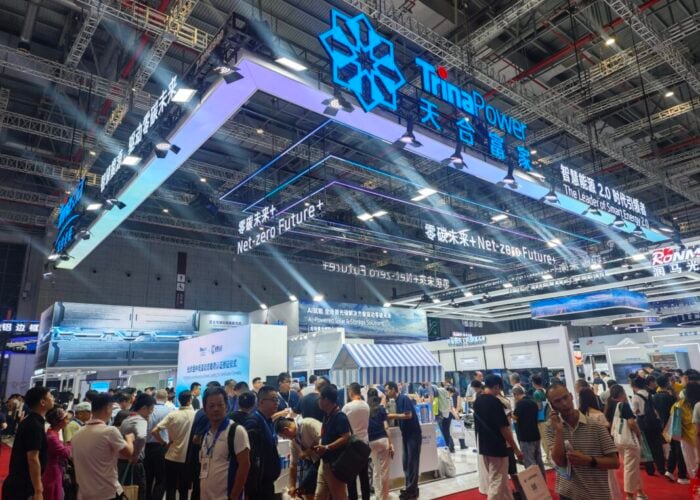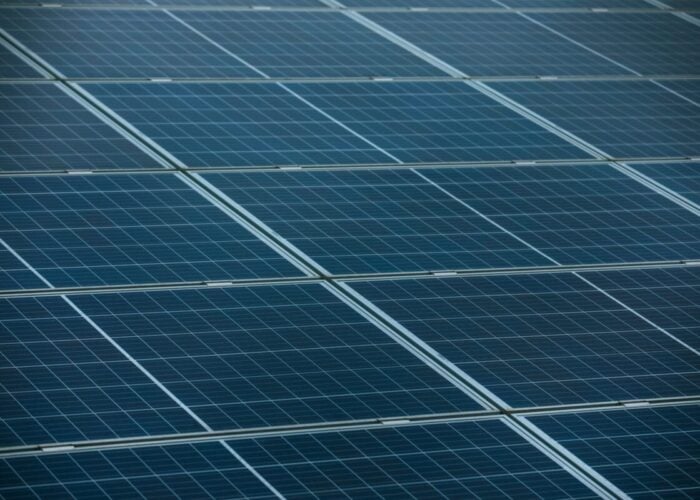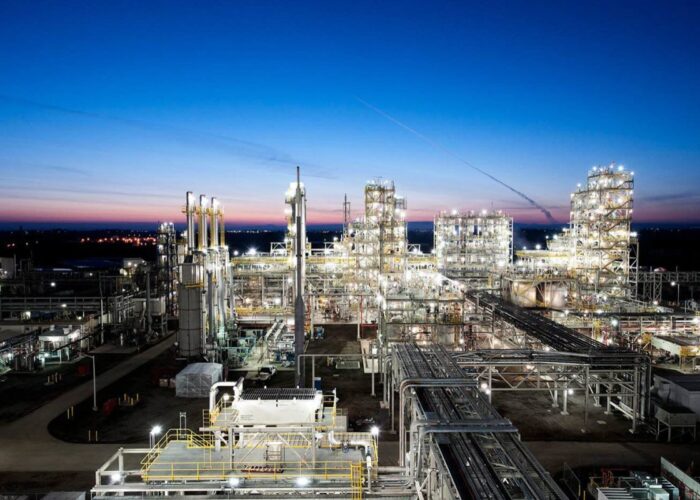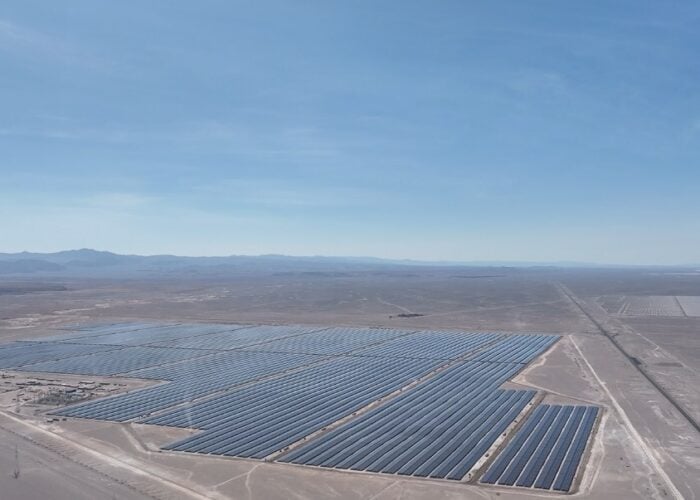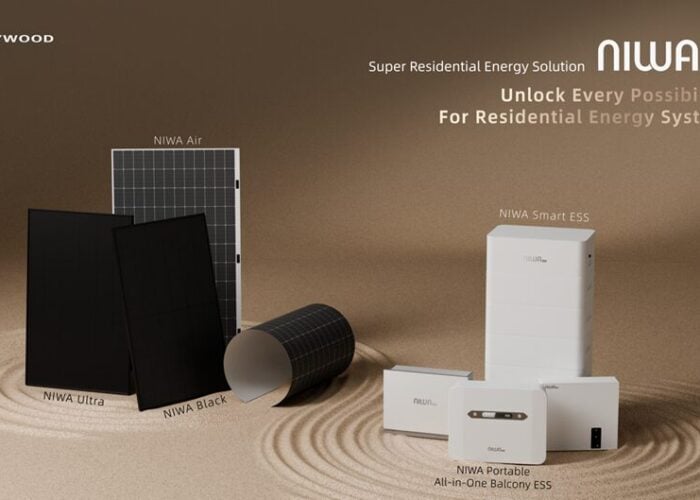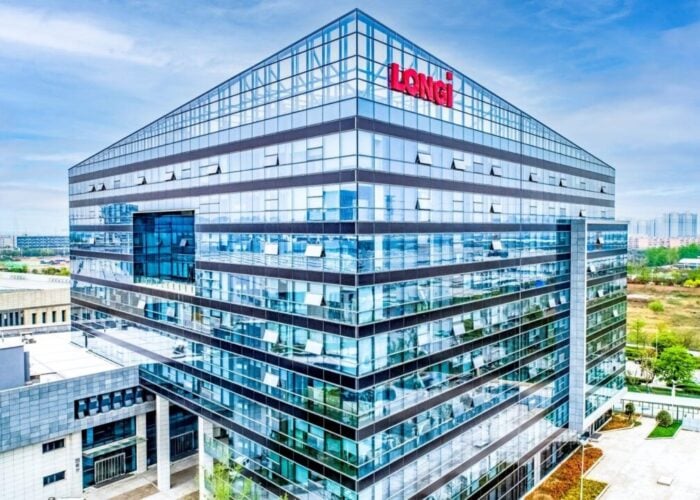
PV CellTech 2019 takes place in Penang, Malaysia on 12-13 March 2019, and once again will feature keynote presentations from CTOs and heads-of-R&D from the leading multi-GW cell producers of the industry in 2019.
Now that p-mono PERC cell production is set to be the dominant technology architecture in the PV industry in 2019 (as revealed in a blog on PV-Tech last week), it is the perfect time to address the most important question now for the PV Technology Roadmap: what next after PERC?
Unlock unlimited access for 12 whole months of distinctive global analysis
Photovoltaics International is now included.
- Regular insight and analysis of the industry’s biggest developments
- In-depth interviews with the industry’s leading figures
- Unlimited digital access to the PV Tech Power journal catalogue
- Unlimited digital access to the Photovoltaics International journal catalogue
- Access to more than 1,000 technical papers
- Discounts on Solar Media’s portfolio of events, in-person and virtual
Indeed, with PV CellTech offering a glimpse into the future of solar cell mass production (2-3 years out), many of the attendees and speakers at previous events had been flagging this question when it was clear there was a mass migration from Al-BSF cells to rear-passivation layers and local contact openings.
Therefore, PV CellTech 2019 will address the what-next-after-PERC question in depth in March 2019, coming at it from different angles, indicative of the various next-technology approaches seen across the industry today.
To fully address the scope of the topics on offer at PV CellTech 2019, I have split the write-up here into two separate blogs. Part 1 will cover key speakers and topics for Day 1. A follow-up blog later this week will go through the content of Day 2.
In each of the two blogs, I reflect on the relevance of topics and themes chosen for PV CellTech 2019, while highlighting some of the key questions that will hopefully be answered during the two days in Penang.
The full agenda can be viewed via the tabs on the PV CellTech website here, including details also on how to attend the event in March.
Opening session at PV CellTech to showcase JA Solar and Hanwha Q-CELLS
The conference opens with three talks, including invited keynotes from the two most prolific c-Si cell producers of the past five years: JA Solar and Hanwha Q-CELLS. The session will be rounded out by the first of two talks I will give at PV CellTech this year.
Indeed, it is great news that the CTO of JA Solar, Dr. Wei Shan, will again be presenting at PV CellTech. In fact, the timing in March 2019 for JA Solar to be kicking off PV CellTech 2019 could not be more apt, with recent PV-Tech analysis putting JA Solar as the number-one ranked cell producer by volume during 2018.
This is the first time that JA Solar has headed the annual cell production rankings, something that reflects the fact that JA Solar began its life as a cell producer and was unique in China as being high-efficiency cell focused. JA Solar was the first in China to seek to mass produce many advanced cell concepts.
High efficiency cells from JA Solar have included PERCIUM (PERC), RIECIUM (reactive ion etch, subsequently a leading type of black silicon cell), WRACIUM (wrap-through, a legacy advanced cell concept now seeing a mini-revival and to be featured in PV CellTech this year for the first time), and SECIUM (an early selective emitter concept that used for former Innovalight ink, that was subsequently morphed into the doped paste that transformed front-side screen printing of fingers).
Hearing the CTO of JA Solar, Dr. Shan, delivering the opening talk at PV CellTech 2019 is certain to be one of the highlights of PV CellTech 2019!
Anyone that has attended the past three PV CellTech conferences will have heard me say many times that the two companies that have been at the forefront of multi-GW cell production using high-efficiency designs, over the past decade, have been JA Solar and Hanwha Q-CELLS.
Outside of the bespoke n-type production of SunPower and Panasonic (former Sanyo), it was JA Solar and (then) Q-CELLS (from Germany and Malaysia production) that set the benchmarks for p-type cell efficiencies in multi-GW mass production. While JA Solar had a dual mono/multi cell production strategy, Q-CELLS was focused entirely on multi for mass production.
This multi-focus from Q-CELLS, and its headcount of leading cell physicists from European research institutes, was a key driver to Q-CELLS being the first company to scale PERC into mass production, quickly upgrading all its lines in Malaysia. For some time, Q-CELLS (and subsequently Hanwha Q-CELLS) was the main proponent of PERC-based modules to the market.
The company’s reliance in using only its in-house cells for modules was also a further sign in the company having mastered PERC reliability (in particular understanding degradation mechanisms and the key specifications needed from wafer supply). Other companies with in-house PERC (such as REC Solar across its Singapore cell lines) were known to rely also on cells coming from newly-ramped multi PERC lines in Taiwan, for example.
Over the last five years, collectively JA Solar and Hanwha Q-CELLS have produced approximately 42GW of solar cells in-house, well above any other pair of companies in the solar industry.
Therefore, simply finding out what is on the roadmap from these two companies alone is worth the ticket-entrance for PV CellTech 2019! As such this forms our first main question to be answered at the event in March!
Evaluating p-type mono and multi competiveness in 2019
The second morning session on Day 1 at PV CellTech 2019 will take a fresh look at what has been the most hotly-debated topic during the past few years at the event: mono-or-multi?
The question is often overplayed in the PV industry, with some companies swearing by multi as still being the most bankable module solution across many GW-scale markets outside China.
Ultimately, each cell technology is still critical to the industry moving north of 120GW this year, and to 200GW in the next few years.
The session will therefore hear from some of the companies that continue to drive multi cell efficiencies forward, in particular Canadian Solar. The company – and its Senior VP and CTO Dr. Guoqiang Xing – has been a regular speaker at PV CellTech in the past few years, and he will again be offering an insight into Canadian Solar’s cell technology roadmap for 2019. Of all the companies in the PV industry today with multi-GW cell and module production levels, Canadian Solar is probably the leading benchmark in assessing how multi keeps competitive with mono. Canadian Solar now has industry-leading multi-PERC cell production levels and has introduced a host of efficiency-additive processes here in the past few years.
Included in this session also is Dr. Chung-Han Wu, the CTO of multi-GW producer Boviet Solar. Dr. Wu’s presentation at PV CellTech 2018 was one of the highlights of the conference and many will be keen to see how many of the technology roadmap options are still being pursued across Boviet’s production lines in Vietnam.
Metal-wrap through (MWT) technology update at PV CellTech 2019
The morning session on Day 1 concludes with a mini-session on metal wrap through cell technologies. Until a few years ago, MWT was widely considered as a technology that was tried-and-tested 10-15 years ago, and unlikely not to see any great resurgence.
Not the case! Indeed, aided in part by the desire to differentiate production lines in China post-Top-Runner variants, MWT capacity has been added in no inconsiderable amounts in China over the past 12-18 months, and a host of module assembly companies are lining up supply deals to offer this technology-type to various rooftop markets across Europe and the US.
In the past however, MWT was mainly seen as a stand-alone bespoke cell architecture. However, its somewhat-modest merits in terms of cell efficiency deltas and subsequent reduction in cell-to-module losses did not get the widespread backing of the PV industry. As such, the technology rather fell back to the research labs.
The new USP for MWT though is as a process flow extra to the current range of PERC, n-PERT and other high-efficiency platforms.
In seeking to find out the true capability of MWT, there is no better institute to offer an overview than ECN which championed MWT cells out of the research labs 10-15 years ago through various European-based collaborations. PV CellTech 2019 will hear from Dr. Arthur Weeber, senior scientist specialist at ECN (part of TNO).
Hopefully, by the end of the MWT mini-session, the industry as a whole will have a clear indication of what can, and can’t be done with MWT, and how via hole drilling with back-contacts can help in giving some cell producers a value-added against the 80GW-plus of mono-PERC capacity currently in the industry.
Explaining the n-type capex excitement
The whole of the Day 1 afternoon is set aside for n-type cell capacity and production trends. With p-mono PERC now the mainstream choice in 2019, the timing again is perfect to evaluate what has been happening with n-type investments (largely across China and pockets of Europe) during 2017-2018.
Nobody doubts the capability of n-type as the ultimate wafer substrate, and the two leading proponents for cell architectures – IBC and HJT – have been well-proven at the GW-scale levels, albeit by one manufacturer only in each case: at least from the context of cell efficiency, if not from a cost perspective in a world of 25-30c/$ module ASPs.
In fact, one should add LG Electronics as the other one-off leader in the n-PERT variant of cell production, where many parallels can be drawn with SunPower and Panasonic as the other n-type champions of the last decade. Each company has invested heavily into R&D, developed in-house tool know-how that retains ownership of IP, and saw the cell side as key to having a differentiated module offering (largely now confined to rooftops globally).
This largely frames what we have seen in the past few years with n-PERT (mostly in China) and HJT (in China, Taiwan and Europe). Here the aim is to emulate cell efficiencies but with a different cost structure that allows competing (at a minimum) with state-of-the-art p-type modules on an LCOE basis, and having a product that can serve large-scale ground-mount installations with bifaciality.
The first part of the afternoon session of Day 1 at PV CellTech 2019 will look at passivated contacts, as a next-generation process flow on the rear side of solar cells. Passivated contacting is not new to mass production and some of the n-type leaders (outlined above) have been successful incorporating this into generations of cell lines.
Different approaches are on the table today, and there is a vibrant institute-driven technology-transfer climate that seeks to enable cell producers to implement the necessary production line upgrades or new line capability.
Passivated contacting certainly does not fall into the options that feature in the what-next-after-PERC debate. Rather, they should be viewed in their own context and what this allows for in the first instance; across companies in China in particular that are driven to mimic the high-efficiency process flow that exists only at LG Electronics today – at least as it relates to the overarching n-PERT devotees.
Heterojunction success in 2019 could still be the big news for the PV industry
In looking at all the n-type options today, HJT remains the one that could have the greatest impact in the industry. Investments are at record levels; leading equipment makers are prioritizing this tool set; and for new entrants, this offers the most compelling argument to investors when looking at being technology-differentiated from p-type in 2-3 years.
While n-type solutions collectively have certain intrinsic benefits over any p-type platform, HJT is perhaps the solution that comes closest to using thin-film deposition tools that exist from various equipment makers, and where much of the know-how is aligned with various steps deployed in the flat panel display industry. HJT is a natural also to use sub-120 micron wafers in the future.
If a-Si thin-film ended up a distraction for many tool makers (not to mention the unfortunate outcomes suffered by all the turn-key end-users), then HJT could still be the reality-check and where the real opportunity still lies. In fact, if HJT comes through big-time in 2019/2020, it will be largely down to the tool makers.
The final session on Day 1 will therefore be all about HJT from some of the leading deposition tool suppliers, not to mention some of the companies that have moved into mass production in the past 12 months.
Signing up for PV CellTech 2019
To register to attend PV CellTech 2019 in Penang, Malaysia on 12-13 March 2019, please follow the links at the event website here.
The second part of this blog series will appear on PV-Tech later this week, looking at the key topics and speakers for Day 2 of the event.

